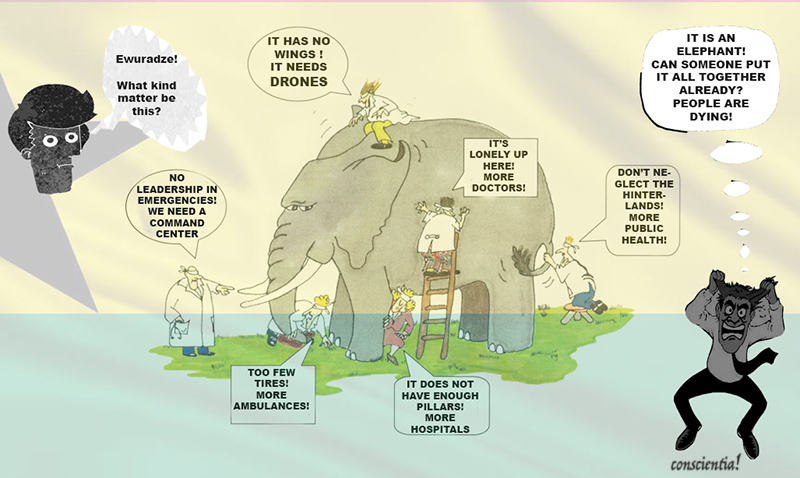In 1848, the people of Venice, chafing under Austrian rule for over 50 years, revolted. An Austrian battalion under Field Marshall von Radetsky was sent to quell the rebellion. He blockaded the city causing starvation and disease. However, he could not get close enough to the city to bring his artillery to bear. That is when a young Austrian artillery lieutenant named Franz von Uchatius thought of what would become the first Unmanned Aerial Vehicles (UAV) or drone.
On July 22, 1848, the Austrians filled balloons with explosives and launched them towards Venice. Unfortunately, the wind was not in the Austrians favor and the balloons were blown off course. Some were even blown back towards the Austrians positions and exploded over them. They tried again a few weeks later on August 22, this time launching the balloons from the sea but the outcomes were no better.
Over the next century, other countries would try variants of Unmanned Aerial Vehicles (UAV) for military purposes but it was the Israelis who would perfect it for war against Syria in 1982. Their success in using drones for reconnaissance led to an explosion in the development of these vehicles. Now drones are used not only by the military but they have found use in civilian life. From capturing live events to surveying dangerous areas, drones have found use in several industries and sectors, including the health sector. It is its use in this sector that inspired this piece.

Much of the information on the use of drones in healthcare being put out make claims about how drones will change the practice of emergency medicine in particular and all of the healthcare delivery in general. There is also great optimism that drones could revolutionize healthcare delivery in remote, hard to reach regions.
Some of these claims are being proven in a country like Rwanda where the use of drones has changed the way medical supplies and blood are delivered to hospitals around the country. Remote areas in this hilly country can be supplied easily with medical supplies and blood using these unmanned aerial vehicles. Other claims, however, have to be weighed against the healthcare needs of each country and the resources available. This is especially true for poor countries like Ghana.
With these two factors in mind, drones may not always be the first choice when considering new purchases or investments for the healthcare sector.
Using three clinical examples, I’ll try to illustrate why drones, revolutionary as they may be in the transport of medical supplies and blood, should not always top the list of healthcare needs for a developing country like Ghana.
The first example draws on the so-called Ambulance Drone. This has been made popular by a video made by Delft University of Technology, in the Netherlands. This a drone that carries an automated external defibrillator. In the video, it is flown to a patient who collapsed on the street and used to defibrillate his heart.
Now, a human heart does not fibrillate without reason and the reason in each instance is very bad. The major cause is an acute blockage of blood flow to the heart. The fibrillating heart fails to pump blood to the brain and so the patient passes out. Without chest compressions and fibrillation, death is rapid. However, even after shocking the heart out of that terrible rhythm, the patient has to placed in an ambulance by paramedics and transported to a hospital where a cardiologist can open up the blocked vessel or vessels with stents or a surgeon can bypass them.
So, though this AED drone may help shock the heart out of ventricular fibrillation, humans are needed to place the patient in an ambulance and drive him to a hospital for definite care. Very little can be done for these patients at the side of the road. Data shows survival is dramatically increased if patients are taken in for revascularization quickly.
Next, let us look at a condition often touted as being indirectly amenable to resolve with a drone’s use – the treatment of the anemic pregnant woman at a remote location with blood.
Now anemia in a pregnant woman is always serious. It can be chronic due to say, malaria, or it can be acute due to hemorrhage or bleeding. When such a patient reports to a clinic or a community-based health planning compound, a midwife or nurse can evaluate this patient and make the call for blood. If the anemia is chronic, she could easily transfuse the patient by getting a drone to drop off a unit or two. However, if the patient is actively hemorrhaging, she belongs in a hospital because active bleeding in a pregnant woman can end very badly for her and the fetus and is an emergency.
Let’s just say it is placental abruption, a condition where the placenta is detached from the uterus. She is going to nee surgical care and transfusing her blood is not going to fix the underlying problem.
Also, the bleeding and transfusion can set off a condition in the body called disseminated intravascular coagulation (DIC). As the body loses blood, it tries to form clots to reduce the bleeding. This depletes the body of clotting factors, thus worsening the bleeding. This a vicious cycle that needs to be taken care of in a hospital. It is another emergency.
The patient needs to be placed in an ambulance by paramedics and driven to a hospital where she can be cared for properly.
The third example is that of snake bites. Worldwide, there are about 5 million snake bites a year. 100,000 of these patients die. Due to underreporting in poor countries, the numbers could be much higher. In Ghana, vipers seem to be the most common snakes that bite, although there are also cobras. The snake injects the body of its victim with a venom. If this venom leads to generalized symptoms, the condition is called envenomization.
Getting envenomed by the venom of a viper leads to several symptoms the worst of which is the bleeding that often requires blood transfusions. The tissue at the site of the bite can also die and as the venom spreads, more tissue in that limb dies also. This often needs surgery to remove the dead tissue or in worst case scenarios, amputation of the limb. Failure to admit these patients, treat them with anti-venom plus other supportive measures can result in death.
Sure, a drone can deliver the anti-venom in a cool state and even blood and antibiotics but ultimately, the patients need to be transported by paramedics in an ambulance to a hospital.
In all three scenarios, we realize that even if a drone can arrive quickly with first-aid materials, the patient still needs definite care in a hospital and that demands paramedics and an ambulance. Drones cannot do that. At least, not yet.
In the healthcare system of every nation, one can tease out three main sectors: Preventative Care (Public Health), Emergent, Acute and Chronic Care (Hospitals and Clinics) and Rehabilitative Care.
In spite of all the strides made in preventative health, the bulk of healthcare delivery is seen in the emergency, acute and chronic space. This calls for community-based clinics that can be first in line to see the sick. Those that need more advanced care can then be transferred to district hospitals or even the bigger regional ones. This calls for an effective way to transport not only the acutely ill but also emergencies. This calls for ambulances.
For the transport of these sick patients, trained personnel are needed who can care for these patients during transport. Paramedics are needed.
Without a good and effective system to transport patients to the effective points-of-care, all the drones in the world flying all the blood and medications available will not save these patients. No politicizing will change that. It is that simple.
Thus, in a country with as few resources as Ghana has, maybe our eminent concern should be making sure the country has good ambulance coverage. It is reported that Ghana has 55 working ambulances. That is it.
What about the areas with bad roads or no roads? Well, if we are ready to invest in the newest technology, it shows a willingness to think out of the box. Maybe we need to get helicopters not drones to fly patients out of these areas. Maybe we can use hovercrafts in the areas under water.
So do we need drones at all? Yes, they can revolutionize the supply chain in the healthcare sector. That is a need that has to be met. However, as shown through the examples, the greatest supply chain in the world is useless if those who need care cannot be transported effectively and efficiently to the hospitals and are left to die far from the points-of-care at the back of pick-up trucks and in taxis.
I hope we can take care of our pressing needs first and not get carried away like those balloons filled with explosives the Austrians launched back in 1848.
